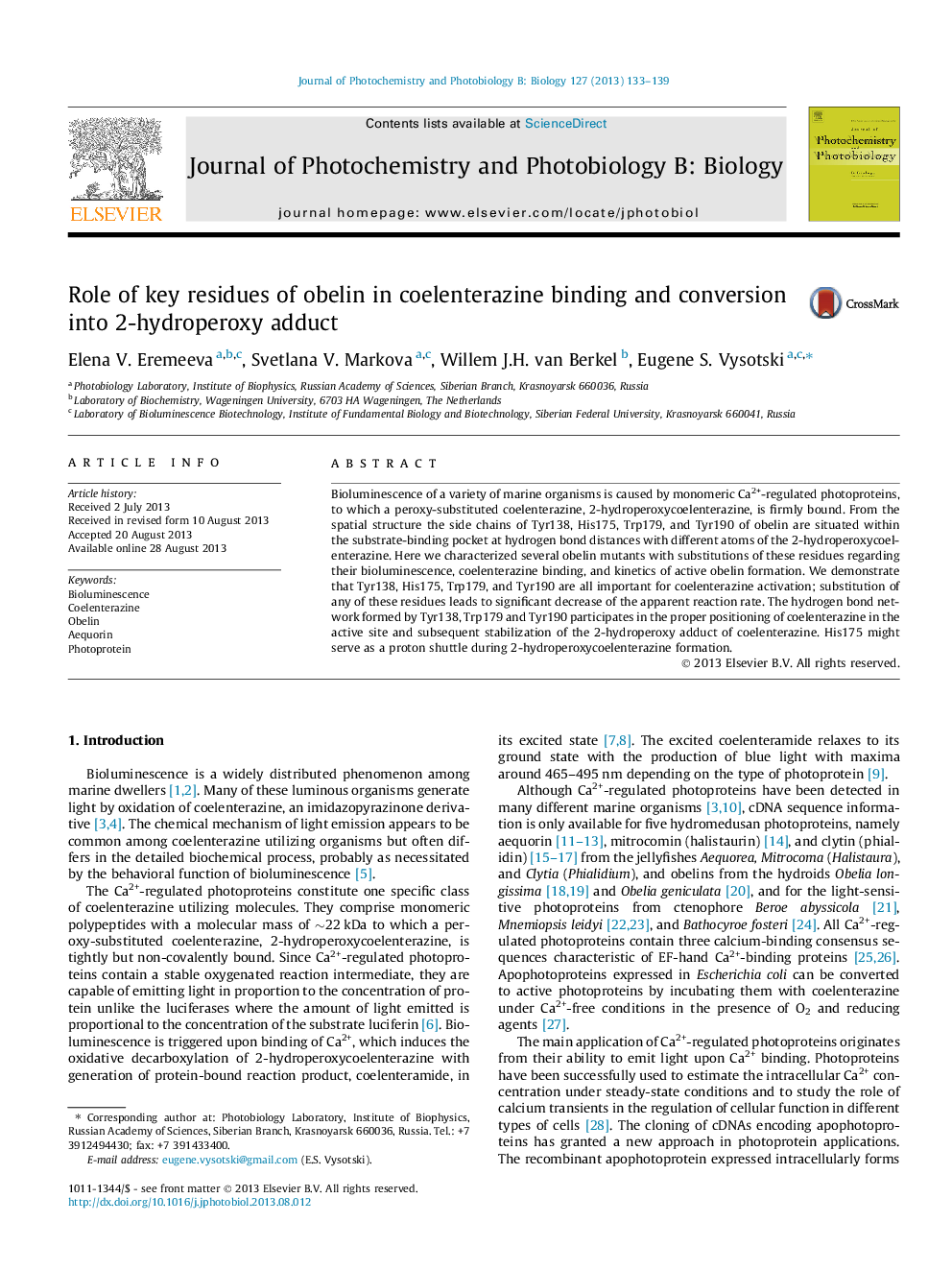| Article ID | Journal | Published Year | Pages | File Type |
|---|---|---|---|---|
| 30333 | Journal of Photochemistry and Photobiology B: Biology | 2013 | 7 Pages |
•Coelenterazine binding and kinetics of active obelin formation are studied.•Tyr138, His175, Trp179, and Tyr190 are all important for coelenterazine activation.•The proper hydrogen bond network over coelenterazine is required for its activation.•His175 might serve as a proton shuttle during 2-hydroperoxycoelenterazine formation.
Bioluminescence of a variety of marine organisms is caused by monomeric Ca2+-regulated photoproteins, to which a peroxy-substituted coelenterazine, 2-hydroperoxycoelenterazine, is firmly bound. From the spatial structure the side chains of Tyr138, His175, Trp179, and Tyr190 of obelin are situated within the substrate-binding pocket at hydrogen bond distances with different atoms of the 2-hydroperoxycoelenterazine. Here we characterized several obelin mutants with substitutions of these residues regarding their bioluminescence, coelenterazine binding, and kinetics of active obelin formation. We demonstrate that Tyr138, His175, Trp179, and Tyr190 are all important for coelenterazine activation; substitution of any of these residues leads to significant decrease of the apparent reaction rate. The hydrogen bond network formed by Tyr138, Trp179 and Tyr190 participates in the proper positioning of coelenterazine in the active site and subsequent stabilization of the 2-hydroperoxy adduct of coelenterazine. His175 might serve as a proton shuttle during 2-hydroperoxycoelenterazine formation.
